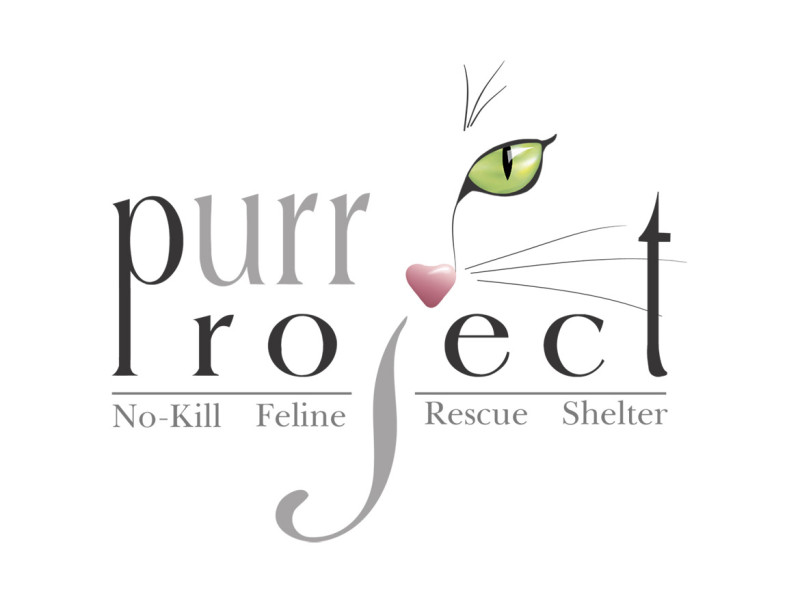Advertising is everywhere you look, every minute of the day; on billboards, in newspapers, magazines, radio, TV, in your email, on many websites you visit etc. All are trying to vie for your attention to make you buy their products or services.
In some cases, very little thought was put into the ad or the business owner thought he could design his own to save a few bucks. More often than not, these don’t do very well.
Other times, the ad is striking enough – either with catchy images, text and call for action that actually grab your attention – and perhaps, make you crave that which they are selling, even if perhaps you didn’t crave it before you saw the ad. That is the mark of good advertising.
Try this experiment
Start paying attention to the advertisements you see everyday. Then try to remember an ad you saw in the last few days. If you can’t remember one you are not alone. If you can, think about why you remember it. Here are some reasons why an ad may have struck you more than an other:
[one_half first][dropcap1]₪[/dropcap1] You are interested in what the ad was saying to you
[dropcap1]₪[/dropcap1]It had a great design or message that caught your attention[/one_half] [one_half][dropcap1]₪[/dropcap1]You connect with the product, idea or mood the ad create
[dropcap1]₪[/dropcap1]It was so bad that you couldn’t help notice it and you probably won’t respond in a favorable manner to the advertisement[/one_half]
Develop an “Eye” for Advertising
Start to develop an “eye” for the advertisements that you are exposed to – you should have plenty of opportunities! As you look at these ads be sure to take note of what catches your attention, what moves you and why. Also take notice of the ads you don’t like and figure out what turns you off. If an advertisement is effective for you it will likely be effective for your customers.
Connect with your Customers
What connects with you should connect with your customers. Your advertising message is an important “contact” with your current and future customers. If your ad doesn’t connect with them, they will surely move on to the next thing.
Use a Strong and Effective Message in All of Your Advertisements
Advertising comes in many forms and each has to be strong. Some examples of advertising that carries your message include:
[one_half first][dropcap1]₪[/dropcap1] Business cards
[dropcap1]₪[/dropcap1]Brochures, flyers and informational pieces
[dropcap1]₪[/dropcap1]Advertisements in print, broadcast or electronic mediums[/one_half] [one_half][dropcap1]₪[/dropcap1]Websites and online galleries
[dropcap1]₪[/dropcap1]Signage, banners, and billboards
[dropcap1]₪[/dropcap1]Your public relations efforts
[dropcap1]₪[/dropcap1]Your pitch – What you tell prospects[/one_half]
What makes an Ad Great
Most great ads have all or some of the following elements in common:
[one_half first][dropcap1]₪[/dropcap1] They have great design, production and execution
[dropcap1]₪[/dropcap1] They get noticed with great images, catchy phrases and other elements
[dropcap1]₪[/dropcap1] They connect with their audience and communicate to them
[dropcap1]₪[/dropcap1] They make their audience feel something[/one_half] [one_half][dropcap1]₪[/dropcap1] They may be entertaining but always make an impact
[dropcap1]₪[/dropcap1] They make you want to find out more or make a purchase
[dropcap1]₪[/dropcap1] They get to the core of a product, service or idea
[dropcap1]₪[/dropcap1] The idea or concept is strong and there is a sense of purpose
[dropcap1]₪[/dropcap1] They fit into the culture of their audience[/one_half]
Print Media…
has a long and established business model but it is evident (and a worry for publishers) that the Internet has made huge leaps and bounds in securing some of the huge annual revenues. Currently, it is quite a level playing field looking at the spend.
US advertising and marketing spend was an estimated $368 Billion in 2010. Online media advertising was an estimated $119.6bn and Print Media an estimated $111.5bn. (Source: FT.COM) The Share of Advertising research support these figures.
The main part of the business model for print journalism has always revolved around advertising dollars. We know that if print media can’t sell ad space in their print editions, they lose income revenue. Advertisers did not take long to catch on to the benefits of targeted advertising marketing the Internet offers. Unlike print, it is very easy to monitor the success of any online marketing campaign and the associated costs. It can be instantly edited, switched on and off and spend capped automatically. This has led to the move from print to online media as it is more accountable. In this respect, if you want to use Printed Media for your advertising, we would recommend you use a medium that also has an online version of their product. Unless you have a coupon the customer needs to bring to get the rebate, printed media alone won’t let you measure the impact very well. If they have an online version and you have some kind of analytics set up on your website, you can at least get an idea of the impact of your ad; it is not perfectly accurate, but it can be very useful in measuring your ROI.
Adapt or Die
Almost every major print media company have an equivalent online publication to satisfy the demand of Internet users and also help ease the transition from print to web advertising. It is a wise move and not accidental. Another concept that the print industry struggled to understand was the Internet business model itself. The Internet trades free information for capturing your online usage, personal data etc, in order for advertisers to target and sell products more efficiently. Almost certainly, the major contributor to this has been the development of search engine based technology websites. Sophisticated systems like Content Network Re marketing allow advertisers to follow prospects around the web displaying the same ads.
News Travels Fast
People do not now have to wait for the next publication for important new updates. Online media circumnavigates the wait and fulfills instant demand for free. Most print publications charge you for the wait. Some may query the quality of the online editorial but there are plenty of amateur websites that deliver excellent content, even if the layout and design are less than professional. With mobile communications offering smart phone and Internet capabilities across the board, it is hard to see how print can keep up with the new emerging technologies.
Social Media
Social media is also playing its part in capturing potential clients and more importantly, creating brand fidelity. The modern Internet user is embracing all forms of interactive social media. FaceBook, YouTube, Twitter, Linked In, Blogging and Photo Sharing all contribute to making small networking groups of individuals with something in common. Print media cannot compete with online social interaction, which incidentally has its competing advertising platforms in place.
Business has also opened up the access for the masses to get involved online. There aren’t many companies who do not have access to the Internet. Most firms allow Internet access to employees. If the access is available then people are more likely to use it as second nature. It is another victory of technology over print.
Don`t Discount Print
However, many people now feel advertising on the internet is intrusive, additional noise and a distraction. Even opening an email is now a bombardment of ads. There are new advanced techniques in avoiding ad blindness (familiarization of the web page layout of frequently re-visited websites) by means of examining internet user behavior. What print media offers to readers is the tried and tested way of delivering news content and advertising in a format that that can be classed as relaxation.
Daily Newspapers are ideal for cross media advertising campaigns, filling in the gap between TV commercials and Internet advertising. Over 40% of readers spend over 30 minutes but under 1 hour reading dailys. Readers and advertisers are quite loyal to each brand and this fact is probably the key to keeping print or converting them to online publication.
Regional and local Newspapers or magazines are excellent for local business advertising. Consumer and Trade Magazines have the ability to target adverts specific to those who may be in the niche industry or services.
Advertising certain products that do not convert well online such as aids for the elderly do well in color supplements as that age group may have limited interest of the Internet.
Straight Line Conversion
Many print publications are pinning their hopes of converting readers in a straight print to online conversion. Utilizing the Mobile and Tablet market, they are introducing Apps which deliver cut down versions of the news daily or weekly publication for a fee. Publishers feel that the two can compliment each other as there is still a loyal base of newspaper purchasers, even if in decline. US daily newspaper circulation went from around 63 million in 1985 to 40 million in 2010. Even with reduced sales, these are still huge sales figures and advertising revenues. Most publishers see the way forward as combining print and online media advertising.
Demographics
It is also reasonable to assume that as the percentage of older age groups live longer, they will more conversant with print media. Whereas the younger generation may well only be interested in online media, especially in mobile computing technology. This one area where print media will have to focus to capture the interest of the younger generation.
Even though online marketing is on the rise, the influence of print advertising must still never ever be underestimated. Since the common brochure or flyer can, in some cases, be a hundred times more appropriate than its online counterpart, they shouldn’t be dismissed or of the equation. The old processes can’t be discarded out the window that easily, if ever. Flyer and postcards marketing in targeted neighborhoods, for instance, can be extremely forthcoming. This is where a online advertising is at a bog disadvantage over print advertising.Full-color brochures work fantastically at meetings and other events. There are many potential customers that do not have any access to the Internet. Distributing out brochures to them keeps them in the loop with the goings on in the business. Cold calling is one other area where brochures would be more practical and powerful.
[hr]
[one_third first]Other Portfolio Items[/one_third] [two_third][slideshow 5]
[slide title=”Logos & Image Branding”] [/slide]
[/slide]
[slide title=”Websites & Online Marketing”] [/slide]
[/slide]
[slide title=”Videos & Slideshows”] [/slide]
[/slide]
[slide title=”Photography for Clients”] [/slide]
[/slide]
[slide title=”Wildlife & Nature Photography”] [/slide][/slideshow][/two_third]
[/slide][/slideshow][/two_third]



